Find Which Dosha Dominates Your Body and Start Working On It
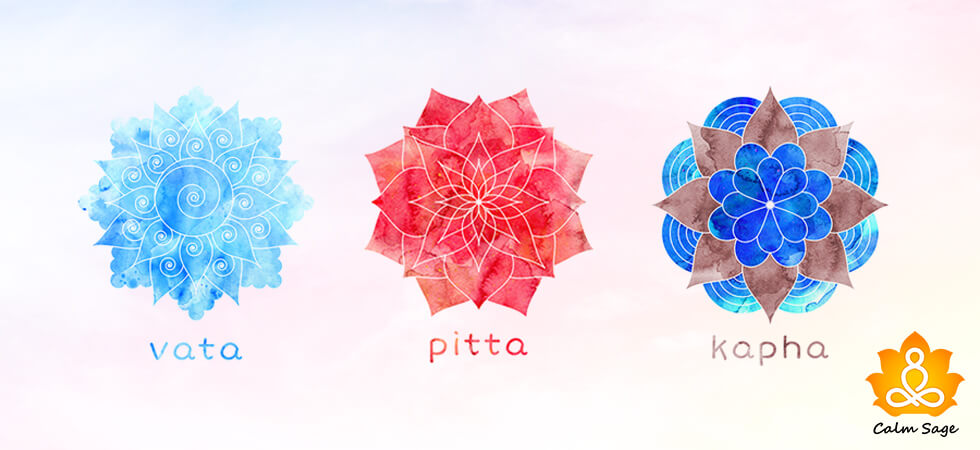
As the old saying goes…
No two individuals are alike!
Indeed! We are all unique in our own special way. This uniqueness that we have is majorly an outcome of our personality. There have been hundreds of theories trying to explain what personality comprises us. One such approach from Indian Ayurveda, known as Charak Samhita also attempts to classify individuals based on three humoural elements/ biological energies called Tridosha. These three Ayurveda Doshas are known as:
- Vata
- Pitta
- Kapha
What are the 3 doshas?
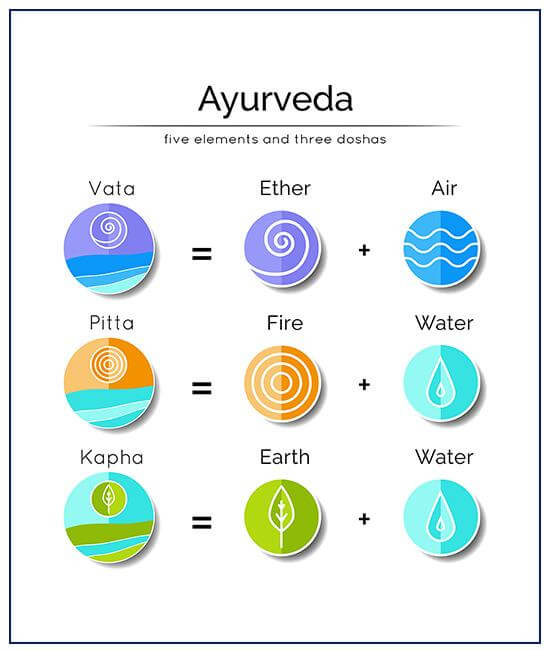 We all have a unique combination of these three doshas within us that reflects in our personality. Recent studies even support the notion that these Ayurveda Doshas are like a blueprint for our health.
We all have a unique combination of these three doshas within us that reflects in our personality. Recent studies even support the notion that these Ayurveda Doshas are like a blueprint for our health.
By learning about your unique dosha combination we can create a deeper understanding of our natural inherent strengths and work on the same. To help you create your Ayurvedic profile we are sharing with you a small quiz that will help you find Ayurveda body type. Along with this you will also find your personal constitution, your physiology, digestion system, and personality. We are also sharing with you signs of imbalance that are related to particular doshas and effective diet, lifestyle, and yoga guidance to bring it back to balance.
How do I know my Ayurvedic Dosha?
Ever wondered What is your Ayurvedic body type? Let us find it with the help of these 15 short questions. Just pick an option that best describes you and keep a note of the same.
Dosha Quiz:
Get ready to discover yourself!







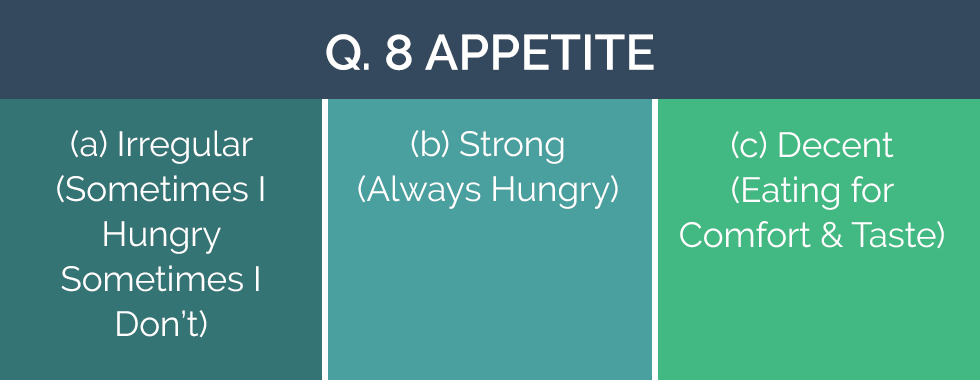

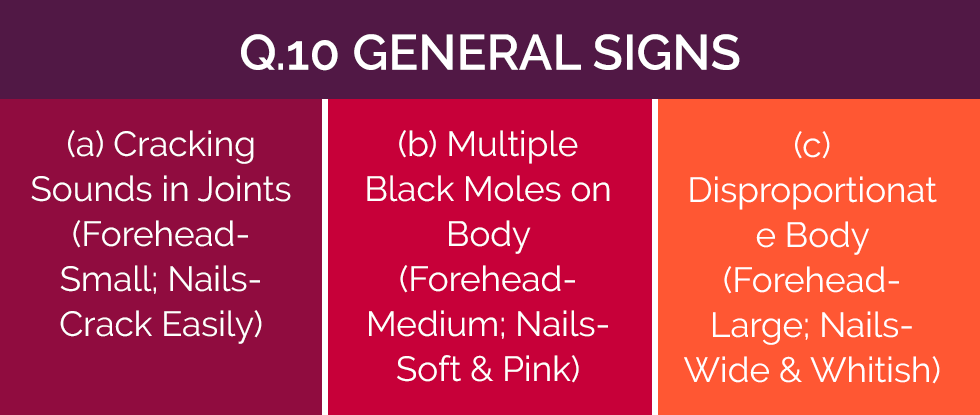
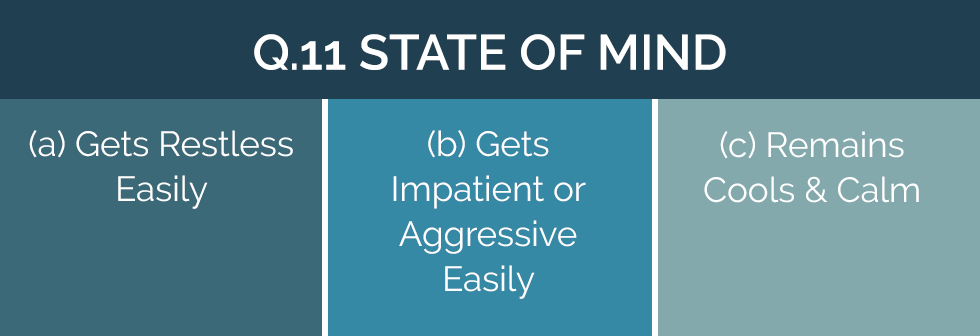




Now that you have your scores handy time to see the interpretation and find out your Ayurveda Body Type

Note: 7A’s & 6B’s= Vata-Pitta; 7B’s & 6C’s= Pitta-Kapha; 7C’s & 6A’s= Kapha-Vata; 5A’s, 5B’s & 5C’s= Tridosha.
Depending on the score and corresponding Ayurveda body type it is now time to create inner and outer balance by working on the dosha that dominates our personality.
How to Balance Ayurveda Doshas Type and Health:
1. Vata Dosha

Elemental Makeup: Air+Ether
Translation of word Vata: Moving Things
Also known as: Vayu (Wind)
Qualities of Vata Dosha:
Some of the key attributes associated with Ayurveda dosha Vata are
Rough, dry, light, subtle, agitated movement, clear and cold just like the wind.
Actions of Vata Dosha:
Vata dosha is responsible for the following actions in our body and mind
- All of our physical movements
- General functioning of our nervous system
- Boosting creativity and joy
- Improving communication
- Respiratory and heart functions
- Elimination of waste
Dominant characteristics of Vata Dosha:
Dominant personality characteristics associated with Vata Dosha are
- Dry skin
- Irregular hair pattern generally fine in nature
- Lack of symmetry in body frame
- Delicate features overall
- Light-colored eyes, smaller in shape or irregular in shape and/or spacing
- Hypermobile joints
- Veins can be easily seen under the skin
- The nose may appear too big or too small concerning other facial features
- Lips may be irregular or thin
Signs of Imbalanced Vata Dosha:
If there is an imbalance in Vata Dosha our body might show the following signs:
- Dry skin
- Irregular appetite; “grazer”
- Cold hands and feet
- Dry cough
- Constipation
- Hoarse throat
- Restless legs
- Tapping fingers, pulling hair, tics
- Hiccups
- Stiff muscles and joints
- Anxiety
- Tinnitus (ringing in the ears)
- Difficulty remembering
- Trouble staying asleep
- Trouble getting to sleep
- Fearful dreams
- Shortness of breath
- Bone density issues
- Tremors
- Trouble swallowing
- Hyperactivity
- Cracking joints

Food Intake for Balancing Vata Dosha:
The food we eat has a big impact on balancing our dosha. Each dosha has its own food requirement. For Vata Dosha the food recommendations are mentioned below:
Food to Consume
Foods that are great for balancing Vata are, in general, sweet, sour, and salty in taste.
- Fruits: Guava, mangoes, grapefruit, Meyer lemons, dates, and ripe bananas
- Veggies: Spinach, sweet potato, carrots, caramelized onions, creamed corn, zucchini, avocado, and butternut squash
- Nuts & Seeds: Nut butter, sesame seeds (salted and warmed only), sunflower seeds
- Beverages: Lime water, sweet & sour fruit juices, tulsi tea, mild tea, vanilla tea
- Grains: Oats, quinoa, rice, whole wheat
- Dairy Products: Yogurt, sour cream, soft cheeses, boiled whole milk
Food to Avoid
Foods that can increase Vata are, in general, bitter and pungent in taste.
- Fruits: Cranberries, raspberries, apples, pomegranates
- Veggies: Broccoli, garlic, cucumbers, radishes, turnips, peas, potatoes, green beans
- Nuts & Seeds: Mustard seeds, black beans, chickpeas, black-eyed peas
- Beverages: Beer, coffee, dandelion tea, rosewater, black tea
- Grains: Corn, millet, cereal, rye, dry-roasted grain
- Dairy Products: Cold milk, hard cheese
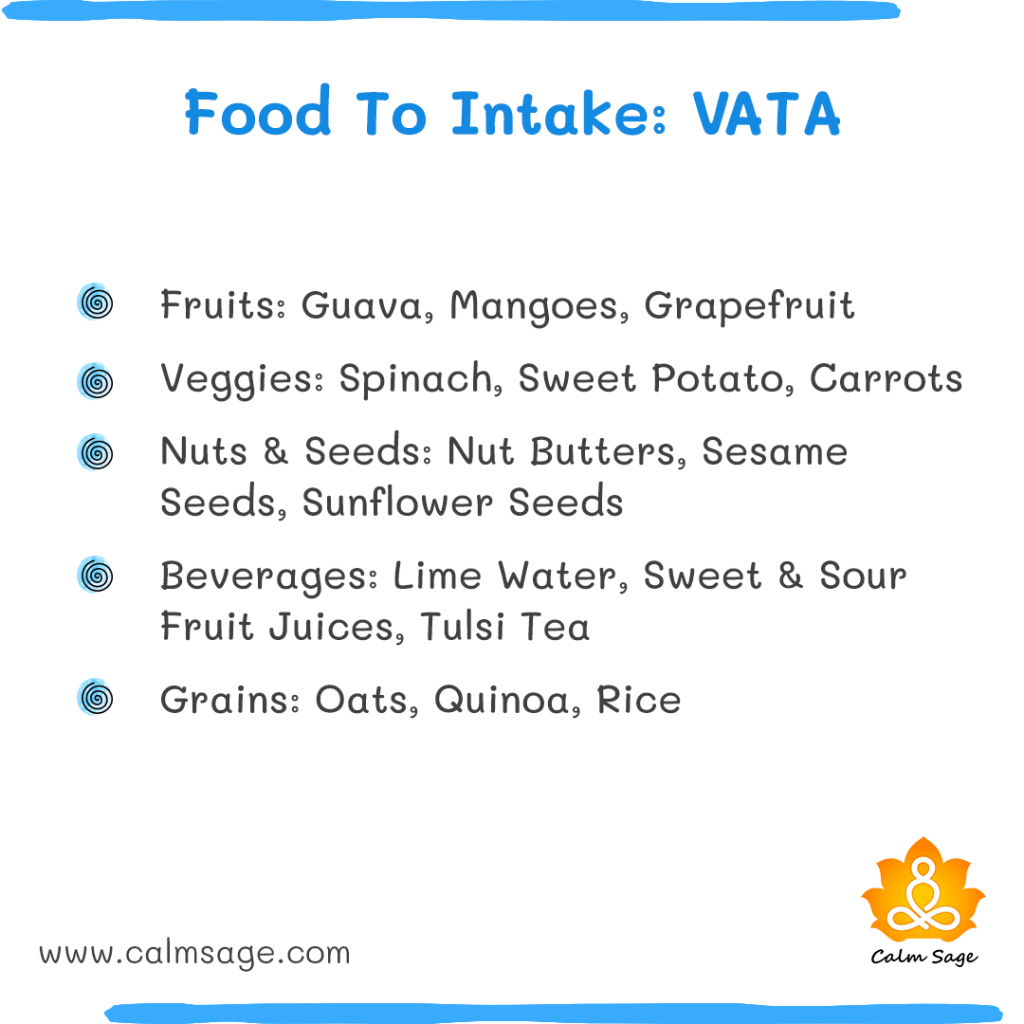
Lifestyle Tips for Balancing Vata Dosha:
Our unhealthy lifestyle is a major cause that is linked with the imbalance of dosha therefore it is important to work on them to find our balance back. To balance Vata Dosha following lifestyle tips can be considered:
- Prefer eating three meals a day
- Always eat your food warm
- Enjoy warm bath or shower
- Pamper yourself with full-body warm oil massage
- Don’t forget to oil your ears
- Sleep with weighted blankets
- Avoid using screens 30 minutes before bedtime
- Take a 30-minute power nap during the day
- Go out and walk in nature
- Laugh and smile with friends more often
- Start meditating daily
- Practice gentle, flowing yoga such as- restorative or Yin yoga

Yoga for Balancing Vata Dosha:
Since the concept of Ayurveda dosha has its root in Indian psychology there is no better way to balance than yoga. To balance Vata Dosha following pranayama and asana can help:
Pranayam to balance Vata Dosha
- Belly breathing or three-part breath
- Nadi shodhana (alternate nostril breathing)
- Ujjayi
- Pratiloma
- Add in mantra (such as om) on the exhale
Asana to balance Vata Dosha
- Legs up the wall pose
- Child’s pose
- Warrior-I pose
- Bridge pose
- Triangle pose

A Gift from Calm Sage: Mobile Wallpaper for Vata Dosha
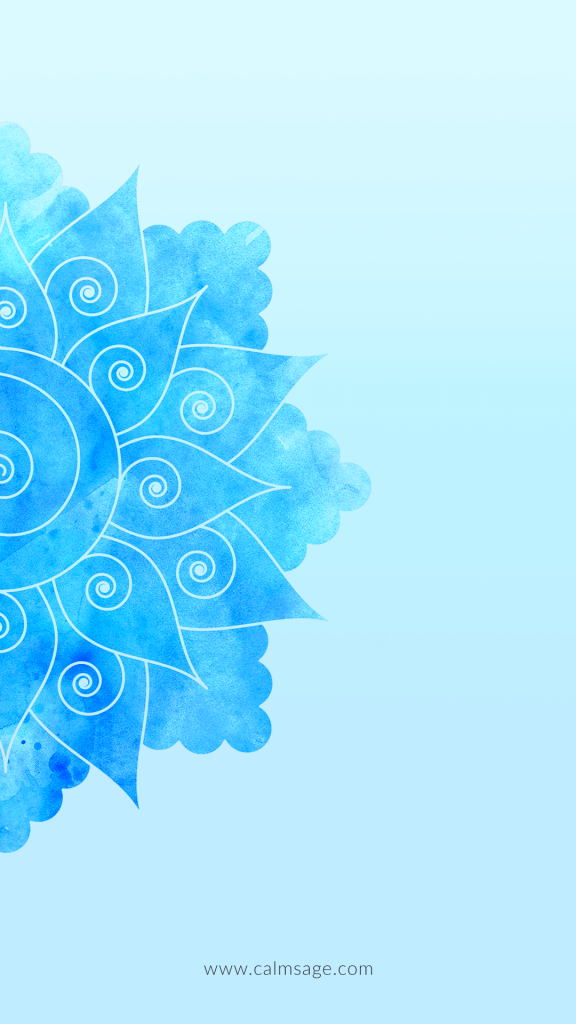
2. Pitta Dosha

Elemental Makeup: Fire+ Water
Translation of word Pitta: Digesting Things
Also known as: Fire
Qualities of Pitta Dosha
Some of the key attributes associated with Ayurveda dosha Pitta are
Hot, sour, sharp, light, a little oily/moist, and sour.
Actions of Pitta Dosha:
Pitta dosha is responsible for the following actions in our body and mind
- Hunger and thirst
- All digestion processes
- Regulation of the liver and small intestine
- Intelligence and understanding
- Softness and health of the skin
- All heat in the body and mind
Dominant characteristics of Pitta Dosha:
Dominant personality characteristics associated with Pitta Dosha are:
- Sharp, almond-shaped eyes (often green or hazel)
- Little body hair or soft, light body hair
- High hairline, with a medium amount of soft hair; in aging process thinning hair to male pattern baldness
- Early to grey
- Sharp nose, teeth, and chin
- Freckles (red hair is also pitta quality)
- Medium to small frame
- Flexible yet stable joints
- The symmetry of hips to shoulders
- Red-colored tongue
- Rosy cheeks and lips
Signs of Imbalanced Pitta Dosha:
If there is an imbalance in Pitta Dosha our body might show the following signs
- Getting sunburns easily
- Heartburn
- Diarrhea
- Nausea
- Strong anger
- Agitation as a stress response
- Teeth sensitivity
- Burning sensation in eyes, skin, mouth, or with urination
- Yellow, smelly urine, or excess urine
- Excess sweat
- Flushed nose, cheeks, or ears
- Bloodshot eyes or yellow in eyes (and skin)
- Acne or skin rashes
- Nosebleeds or excess bleeding when cut
- Smelly feet, armpits, or a general sour smell to the body
- Overanalyzing
- Self-critical
- Jealousy
- Liver and/or blood issues
- Inflammation in general
- Fever
- Heat and agitation with sleep
- Small intestine/digestive acid issues
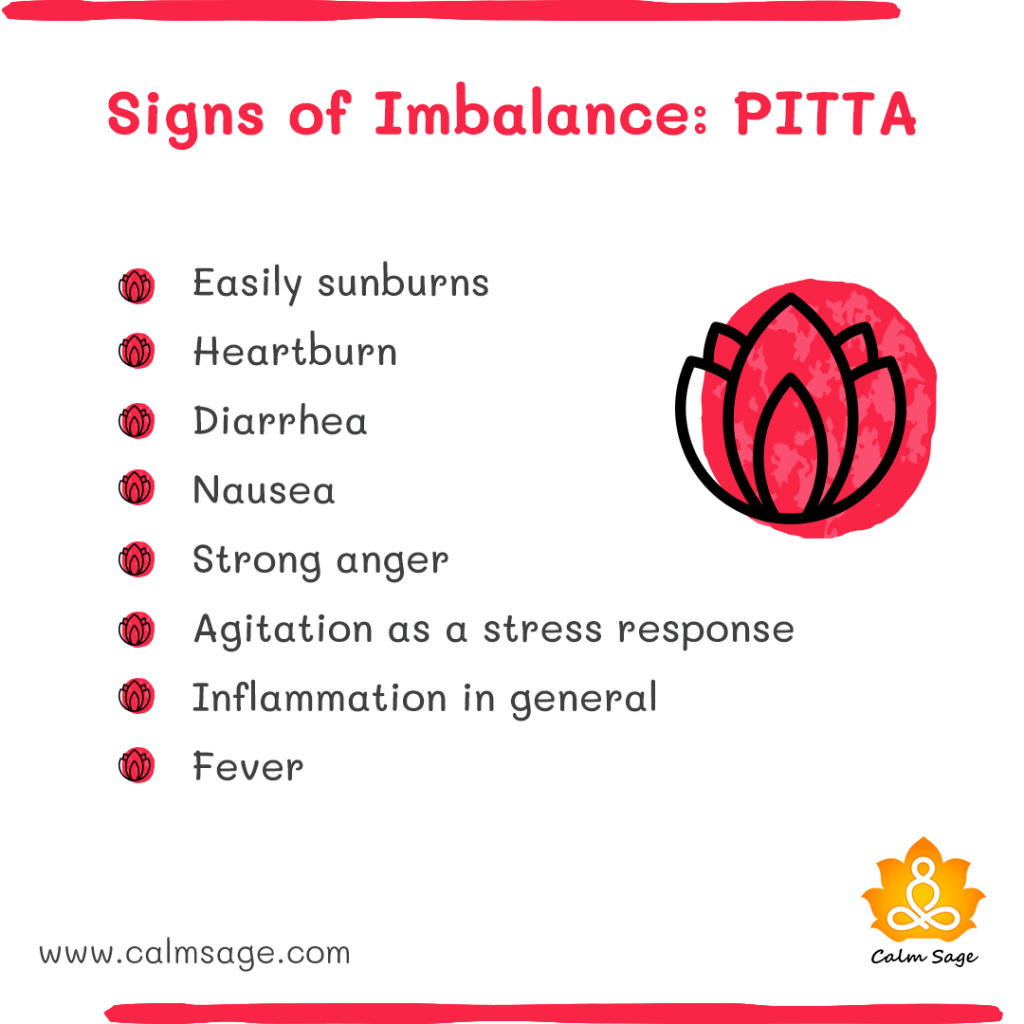
Food Intake for Balancing Pitta Dosha:
The food we eat has a big impact on balancing our dosha. Each dosha has its own food requirement. For balancing Pitta Dosha the food recommendations are mentioned below:
Food to Consume
Foods that are great to balance pitta are, in general, sweet, bitter, and astringent in taste.
- Fruits: Cranberries, figs, pomegranate, coconut, mangoes, honeydew pears, cantaloupe, apples
- Veggies: Cucumber, kale, broccoli, potatoes, peas
- Nuts & Seeds: Chickpeas, lentils, peeled almonds, pecans, sunflower seeds
- Beverages: Chamomile tea, rosehip tea, mint tea, black tea with milk and honey
- Grains: Barley, quinoa, basmati rice, couscous
- Dairy Products: Whole milk, paneer, unsalted cheese
Food to Avoid
Foods that can increase pitta are, in general, sour, pungent, and salty in taste.
- Fruits: Grapefruit, sour cherries, pineapple, lemon
- Veggies: Tomatoes, radishes, raw onions, eggplant, mustard greens
- Nuts & Seeds: Pistachios, peanuts, cashews, and salted nuts
- Beverages: Lemon tea, ginger tea, chicory root tea
- Grains: Millet, rye, corn, buckwheat
- Dairy Products: Sour cream, yogurt, hard cheeses
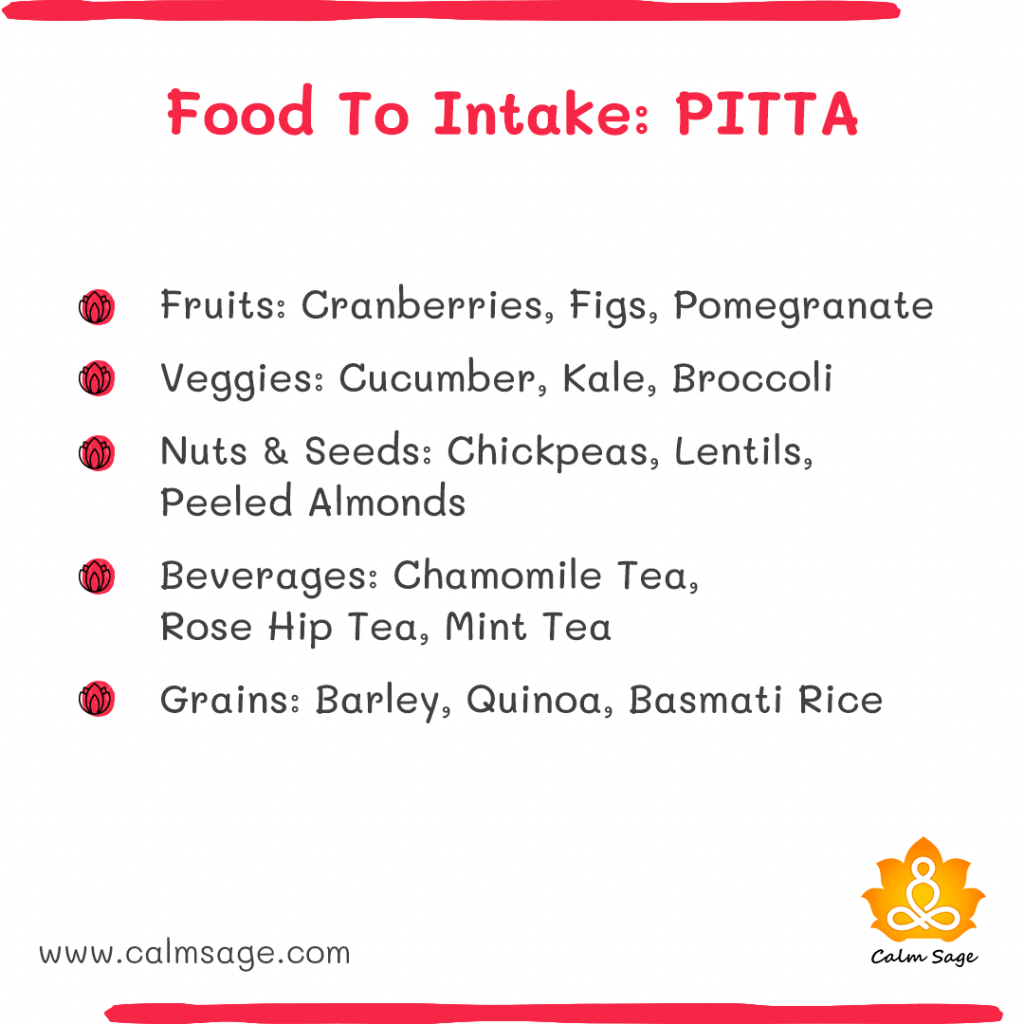
Lifestyle Tips for Balancing Pitta Dosha:
Our unhealthy lifestyle is a major cause that is linked with the imbalance of dosha therefore it is important to work on them to find our balance back. To balance Pitta Dosha following lifestyle tips can be considered:
- Eat 3 meals a day
- Eat while sitting away from desk
- Practice gratitude more often
- Smile, laugh, and sing out loud for at least one minute each day
- Volunteer for a cause or join a club that meets socially
- Take cool showers
- Use sandalwood, rose, or bergamot oil for perfume
- Get off screens one hour before bedtime
- Journal your thoughts
- Listen to calming music before going to bed
- Body oil with coconut oil
- Practice gentle yoga like- meditation, hatha yoga, or tai chi

Yoga for Balancing Pitta Dosha:
Since the concept of Ayurveda dosha has its root in Indian psychology there is no better way to balance than yoga. To balance Pitta Dosha following pranayama and asana can help:
Pranayam to balance Pitta Dosha
- Shitali Pranayama (cooling breath)
- Bhramari pranayama (bee breath)
- Nadi shodhana (alternate nostril breathing)
- Three-part breath
- Sama vritti breath (even breath)
Asana to balance Pitta Dosha
- Savasana
- Fish pose
- Chair pose
- Triangle pose
- Janu sirasana

A Gift from Calm Sage: Mobile Wallpaper for Pitta Dosha

3. Kapha Dosha

Elemental Makeup: Water+Earth
Translation of word Kapha: Binding Things
Also known as: Water
Qualities of Kapha Dosha
Some of the key attributes associated with Ayurveda dosha Kapha are:
Cold, dull, heavy, slow, steady, liquid, and dense.
Actions of Kapha Dosha:
Kapha dosha is responsible for the following actions in our body and mind
- Supports strength and stamina
- Brings stability in body and mind
- Improves our memory
- Enhances quality of our senses especially of tasting and smelling
- Boosts contentment, forgiveness, and compassion
Dominant characteristics of Kapha Dosha:
Dominant personality characteristics associated with Kapha Dosha are
- Large eyes; especially the white (sclera) of the eye
- Eye color is dark and rich in tone; chocolate brown, deep blue
- An abundance of body hair and/or low hairline
- Lush, thick, sometimes curly quality to hair
- Round features
- Smooth, dense skin (oily)
- Solid frame; maybe stocky or large and strong
- Deep-set joints
- Pale tongue
- Large, well-formed teeth
Signs of Imbalanced Kapha Dosha:
If there is an imbalance in Pitta Dosha our body might show the following signs
- Slow or dull digestion
- Stagnation; inertia
- Constipation
- Excess saliva
- Excess mucous
- Greed
- Attachment issues
- Clammy skin
- Wet cough
- Skin tags
- Edema (water retention)
- Excessive napping; difficulty waking
- Hypomobility
- Foggy mind
- Stubborn
- Depression
- Congestion
- Chills
- Lack of appetite
- Difficulty breathing
- Pneumonia
- Cysts
- Feeling heavy or sleepy after eating
- Difficulty initiating (slow starter)

Food Intake for Balancing Kapha Dosha:
The food we eat has a big impact on balancing our dosha. Each dosha has its own food requirement. For balancing Kapha Dosha the food recommendations are mentioned below:
Food to Consume
Foods that are great for balancing Kapha, in general, are pungent, bitter, and astringent in taste.
- Fruits: Apples, apricots, pears, berries, lemons, pomegranates
- Veggies: Mushrooms, eggplant, cauliflower, artichokes, asparagus, dark leafy vegetables, okra, onion, ginger root
- Seeds & Legumes: Black-eyed peas, sunflower seeds, sesame seeds, caraway seeds, pinto beans, lentils
- Beverages: Coffee (in moderation), orange peel tea, spicy chai tea, kombucha, clove or cinnamon tea
- Grains: Corn, millet, rye
- Dairy Products: Yogurt, kefir, goat cheese (all in moderation)
Food to Avoid
Foods that increase Kapha are, in general, sweet, sour, and salty in taste.
- Fruits: Grapes, melons, pineapple, bananas, oranges, banana
- Veggies: Tomatoes, sweet potatoes, avocados, sour veggies
- Nuts & Seeds: Coconut, peanuts, pine nuts, sesame seeds
- Beverages: Coconut water, soda, iced drinks, sweet teas
- Grains: Wheat, oats, and rice (okay if consumed in moderation)
- Dairy Products: Butter, cold milk

Lifestyle Tips for Balancing Kapha Dosha:
Our unhealthy lifestyle is a major cause that is linked with the imbalance of dosha therefore it is important to work on them to find our balance back. To balance Kapha Dosha following lifestyle tips can be considered:
- Eat your most substantial meal between 10am and 2pm
- Clean your closet every season
- Try something new, like a stimulating aerobic class
- Exercise everyday before 10am
- Learn to be assertive, say a No, and not feel bad about it
- Use orange, peppermint, ylang ylang, or bergamot balm for self-massage
- Practice gratitude daily
- Begin a crossword puzzle
- Don’t bottle up your feeling; vent them out on a journal or to a friend
- Listen to fun dance music after work
- Go for a jog in the morning to warm up your body for the day
- Practice vinyasa style yoga or join hot yoga classes

Yoga for Balancing Kapha Dosha:
Since the concept of Ayurveda dosha has its root in Indian psychology there is no better way to balance than yoga. To balance Kapha Dosha following pranayama and asana can help:
Pranayama to balance Kapha Dosha
- Three-part breath
- Bhastrika (bellow’s breath)
- Ujjayi
- Kapalabhati (skull-shining breath)
- Nadi shodhana (alternate nostril breathing)
Asana to balance Kapha Dosha
- Warrior pose II & III
- Wheel pose
- Tree pose
- Boat pose
- Camel pose

A Gift from Calm Sage: Mobile Wallpaper for Kapha Dosha

Time for you to balance your dosha and lead a healthy life ahead.
Ayurveda is simply the science of understanding your unique self and being who you are meant to be.
~Manjiri Nadkarni
Let the journey of being your true self begin…
PS: Don’t forget to share with us in the comment section below your unique Ayurveda Body Type.
You May Like These Also:
Positive vs Negative Reinforcement: Which Is More Effective?
Understanding the Role of Nature in Promoting Our Mental Health
Fear Zone, Learning Zone, Growth Zone | Check Your Mental Zone Now





















This is so apt and fun ? I got Pitta-Kapha and trust me I couldn’t relate more. This helped me understood why I am inflammatory disease. Gonna work on balancing it. Thanks Calm Sage ✨
This is a very nice Blog to know about Body Dosha. Thank you so much for sharing this Blog!
Wow. thanks
Couldnot agree more.. Thank you for the blog!!!